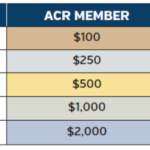
Norasyiqin Tajuddin / shutterstock.com
2018 is coming to a close, and somehow, I have managed to make it through a year as the physician editor of The Rheumatologist without being sued or fired, so I thought this would be a good time to pause and reflect on lessons learned—and to give thanks.
My first lesson: this is a lot of work. I am not stating this to ask for your sympathy. I’m stating this en route to letting you know how awed I now am by professional journalists. The Rheumatologist is not The New York Times or The Washington Post, but this position has given me an inkling of what it must be like to do this sort of work for real. The range and volume of information I have to process, just to turn out a monthly publication, is enormous. I literally cannot imagine how people deal with the exponentially greater amount of work (and tighter deadlines) that must be associated with turning out a daily publication. Newspapers perform noble work, keeping us informed in an era in which facts have fallen out of fashion. More importantly, the work is hard and deserves to be compensated at market rates. So if you have figured out a way around your local newspaper’s firewalls, I would like to suggest, gently, that you consider opening your wallet just a little bit wider this year.
My second lesson: The ACR does a lot of work for you, much of which you likely don’t know about. I am finishing 2018 as a member of the Annual Meeting Planning Committee, the Committee on Training and Workforce and the In-Training Examination Taskforce, so you would think I would have had a good sense of what the ACR does. However, after having spent this past year reading (and rereading) each article published by The Rheumatologist, I am awestruck by the amount of expertise the staff and volunteers of the ACR—in equal measure—bring to the table and the broad range of initiatives they support.
Lobbying for Lobbying
The dark horse in this category is the Government Affairs Committee. Physicians are notoriously bad at standing up for our own interests, which makes it even more critical that we have a committee dedicated to mastering the nuts and bolts of legislation. For years, I have been slightly irritated the ACR did not take more public stances on issues I find important. Now, after hearing Angus Worthing repeat this message umpteen times this year, I am finally beginning to understand that, by avoiding some of the more controversial issues, we make sure the doors stay open on both sides of the aisle.
The other side of the Government Affairs Committee is RheumPAC, which pays for the keys that open the doors. RheumPAC is “the ACR’s nonpartisan political action committee (PAC) that works to elect and support candidates who are pro-rheumatology. It is the only PAC dedicated to the interests of the rheumatology profession.”1 Earlier this year, Mick Mulvaney, a former U.S. representative from South Carolina and now the director of the Office of Management and Budget and acting director of the Consumer Financial Protection Bureau, told a group of bankers, “We had a hierarchy in my office in Congress. If you’re a lobbyist who never gave us money, I didn’t talk to you. If you’re a lobbyist who gave us money, I might talk to you.”2
If you care about issues ranging from NIH funding to the streamlined payment structure for E/M services—& you know you do—then RheumPAC is a worthy recipient of your support.
A firestorm of criticism followed this statement, and in his defense, it should be noted he never said he would not meet with one of his constituents unless a donation was in the offing. That said, it also occurs to me that in other news, water is wet. Money buys access, and although it doesn’t buy you a vote, it may buy you 20 minutes to explain your point of view. So if you care about issues ranging from NIH funding to the streamlined payment structure for E/M services—and you know you do—then RheumPAC is a worthy recipient of your support.
I am not suggesting you mortgage your house to support RheumPAC, just that you stand up to be counted. Currently, a little over 4% of rheumatologists in the U.S. contribute to RheumPAC. Four percent. I can’t imagine the verbal legerdemain that must take place to convince a member of Congress that an organization that receives donations from only 4% of the group represents the interests of all the members of that group.
This past election cycle has shown all of us the power of the micro-donation. Improbable campaigns have sent improbable candidates to Congress, many on the strength of $5 or $10 donations. Even those of you who can’t afford to donate anything can probably afford to donate something, and that’s all I ask.
Giving Thanks
And now, to give thanks, first to my local fan-club: Ethan Craig, MD, MHS, former trainee, and now colleague and friend, helped edit the first few columns I wrote. He reined in many of my more unwieldy sentences while I was trying to get the hang of writing a monthly column. If you like the new feature, Rheumatology, Lost and Found, in which prominent rheumatologists are asked to reflect on classic articles in rheumatology, then you should thank Max König, MD, one of my current fellows, who came up with the idea. I would also like to thank John Miller, MD, another former trainee and, now, my number 1 fan. I know this because every month, nanoseconds after my column is available online, he shows up in my clinic, quoting from my article, his voice tinged with gentle snark.
Simon Helfgott, MD, the previous physician editor of The Rheumatologist, has served as my consigliere and has been instrumental in helping me avoid trying to reinvent the wheel. Similarly, Joan Roth, MBA, PMP, the ACR’s senior director of communications and marketing, has been instrumental in representing the interests of The Rheumatologist to the ACR (and occasionally, vice versa), and her help and support have also been invaluable.
My partners in crime have been Paul Monach, MD, PhD, and Vicky Ruffing, RN-BC. I thank them for agreeing to serve as the associate editors of The Rheumatologist long before I was able to explain coherently what that might mean. They have prevented The Rheumatologist from just becoming a reflection of my own, myopic viewpoint. I have been trying to expand the scope of The Rheumatologist, so that it better reflects the needs and concerns of people who are not primarily practicing rheumatologists, and they have been instrumental to that effort.
The discussion of the instrumental inevitably brings us to Keri Losavio, editor of The Rheumatologist. I don’t always make this distinction in casual conversation, but I am the physician editor: my job is mainly to provide color commentary and, on occasion, to roll up my sleeves and pitch in. Keri Losavio is the editor-editor: her job is to turn out a news magazine, once a month, every month, through national holidays and personal emergencies and other obstacles for which most of us would call for a time-out. Keri was responsible for bringing me up to speed—and spent the entire year gently telling me why we capitalize the letter I in Internet and why so many of my sentences end up in italics.
More importantly, she ensured continuity between me and Simon Helfgott. If any of you are wondering why The Rheumatologist didn’t go on hiatus for four months while I was trying to figure out what I had gotten myself into, you largely have Keri to thank. Many of you have noticed the size of The Rheumatologist has grown over the past several months, and with this growth has come more work, which Keri has taken in stride.
I would be remiss if I did not thank Kelly Weselman, MD, former chair of the Committee on Communications and Marketing, whose committee selected me as physician editor. I also owe thanks to the ACR’s Board of Directors, which has given me two gifts, first by approving my selection as physician editor and then by leaving me alone to write about and publish whatever I chose, mostly.
Finally, I want to thank all of you. I have had the pleasure of meeting many of you in conferences and meetings, and I have been flattered and humbled by your kind words of support. I say this fully cognizant of the fact that there may be a silent majority who has been less impressed, but has chosen to keep their thoughts to themselves given the newness of the role. I thank you, as well, because that is a kindness of another sort.
My friends tell me that reading one of my columns is just like listening to me talk. I hope they meant that as a compliment. I also hope you will hear more of my voice in upcoming editions of The Rheumatologist. I am a firm believer in the adage, “if it ain’t broke, don’t fix it,” and The Rheumatologist is not broke.
That said, I hope to continue to make it more inclusive, and more representative of all of our voices. I noted at the beginning of this year that Simon Helfgott wrote 72 of these columns before he stepped away. With this column, I am at 72-12. With luck, you have noticed something of an upward trend, in both this column and this publication, and I hope the editions to come will be even better!
 Philip Seo, MD, MHS, is an associate professor of medicine at the Johns Hopkins University School of Medicine, Baltimore. He is director of both the Johns Hopkins Vasculitis Center and the Johns Hopkins Rheumatology Fellowship Program.
Philip Seo, MD, MHS, is an associate professor of medicine at the Johns Hopkins University School of Medicine, Baltimore. He is director of both the Johns Hopkins Vasculitis Center and the Johns Hopkins Rheumatology Fellowship Program.
Erratum
In the November report, “2018 ACR Awards of Distinction,” a reporting error was made in the section about Jonathan Kay, MD, professor of medicine, the Timothy S. and Elaine L. Peterson Chair in Rheumatology, and director of clinical research for the Division of Rheumatology at the University of Massachusetts Medical School in Worcester. Dr. Kay has researched gadolinium-induced systemic fibrosis (formerly known as nephrogenic fibrosing dermopathy and nephrogenic systemic fibrosis), β2-microglobulin amyloidosis and other rheumatologic problems of patients with chronic kidney disease for the past three decades—not three years as stated. We regret the error.
References
- RheumPAC portal.
- Thrush G. Mulvaney, watchdog bureau’s leader, advises bankers on ways to curtail agency. The New York Times. 2018 Apr 24.
